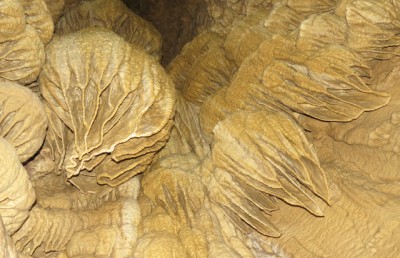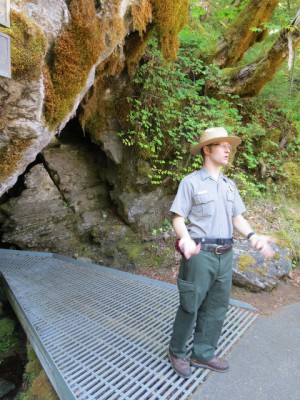After our visit to Jacksonville, Oregon, we decided to check out a couple of wineries! The Applegate Valley is one of the most overlooked wine regions in the country, with outstanding wines and a quiet, relaxed atmosphere. Our first winery stop was Wooldridge Creek Winery. We pulled in to find an amazing covered seating area with cushioned patio furniture, a classy yet inviting tasting room with several books available to read, and another outdoor patio with tables and chairs. Jon’s dad wasn’t interested in wine tasting so he plopped down outside in the shade to read his book.
The winery named after the Wooldridge family who first settled on the property in the 1850s – this isn’t the same family that owns the property and the winery now though. The first grapevines at Wooldridge Creek were planted in the 1970s; it has now expanded to 56 acres planted in twelve varieties: Cabernet Sauvignon, Merlot, Cabernet Franc, Syrah, Chardonnay, Pinot Noir, Viognier, Sangiovese, Zinfandel, Malbec, Petit Verdot and Tempranillo. However, until 2002, the owners sold all their fruit to other wineries; at that point they met and partnered with a wine-making couple to start the winery.
We began our tasting in the tasting room, but soon the draw of the warm sunshine was too much. Our server was very gracious about loading up our tasting on a tray with mini decanters and tasting information for each wine. As I think back on it now (on a gray, rainy day in frigid January), I wish I were back there soaking up the warm rays of the sun!
The wine was delicious – I did find that I liked the reds more than the whites though. The French oak aged Chardonnay was a hit with Jon, but a little too oaked for my taste – good for a taste but too much for a whole glass. There was a Viognier that was quite enjoyable – which was a bit unusual because I don’t typically like many Viogniers. Jon’s mom really enjoyed that one. The reds were wonderful – balanced and approachable while still having lots of structure. We tasted Merlot, Pinot Noir and Malbec.
After Wooldridge, we visited Troon Winery. Jon and I had been there before, and Jon had wanted to go back. We wanted to be outside again, so we shuttled back and forth between the tasting room and the seating area outside. That was a little bit awkward, but it was to be expected as the server had her hands full with other customers. She did tell us a bit about each wine when we came in to get our sample, but it seemed a bit more impersonal than our visit in 2011.
That said, Troon’s wine is excellent – not a bad one in the bunch. Ironically, when we visited in 2011 the Druid’s Fluid red blend was my least favorite wine, but it is the biggest seller for the winery. This year, they didn’t have Druid’s Fluid on the tasting menu, so I don’t know if I would have liked it more now. We ended up getting several wines to bring home with us. For some reason though, I always forget that Troon now has a tasting room in the Willamette Valley, so we will have to stop by there sometime when we are down that way.
After our two tasting room visits, we wrapped up our day and headed back to the rental house to enjoy one last quiet evening on the river before heading home. We swam in the pool, read books, watched the Canada Geese flying overhead to their night roosts, and heard the hum of the jet boats as they took tourists back home after the dinner tour (I so want to take that jet boat tour one day!).
We had to be up before dawn in the morning, because Jon had misunderstood what days he was supposed to get off from work. I had planned for us to spend a leisurely day Tuesday driving home and then go back to work Wednesday, but Jon thought we were coming home on Monday. He had scheduled himself to work at 2 pm on Tuesday, expecting that he would have a quiet morning at home to sleep in and get some things done. Obviously that wasn’t going to happen! Considering that the drive home (without traffic) is 8 hours, we set the alarm for 3 am to get home in time.
We were on the road at 3:17 am! It’s not often that I watch a summer sunrise from the road, but I caught this one. Our early morning travel all worked out in the end though, as we made it home with enough time to get some lunch and essentials at the grocery store before Jon had to go to work. And I had the whole afternoon to take a leisurely nap, unpack and relax for going back to work on Wednesday. It was a nice end to a great long weekend…






























